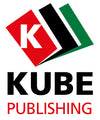Qur’ānic Orthography (Rasm): The Written Representation of the Recited Text of the Qur’ān – Professor M.A.S. Abdel Haleem
ʿUthmān’s codification of the Qur’ān holds primary importance in the Qur’ān’s history. In fact, this standardisation is so important that the Qur’ānic text is sometimes also referred to as the Uthmānic codex.
Traditional sources state that sometime during ʿUthmān’s Caliphate in 23/644 – 35/656, disputes began to emerge among the Muslim soldiers as to the correct way of reciting the Qur’ān.
The Muslim world had grown considerably during this period, and now encompassed regions and cultures as diverse as modern-day Iraq, Iran, Syria, and Egypt. Prompted by Ḥudhayfah ibn al-Yamān, ʿUthmān appointed Zayd ibn Thābit to oversee this process of codification. This codified Qur’ān was then subsequently copied and sent to the various centres of the Muslim world, including Kufa, Baṣra and Damascus.
All other variant copies of the Qur’ān were then ordered to be destroyed. The orthography (rasm) of the ʿUthmānic codex came to be seen as the correct way of writing the Qur’ān, termed as al-rasm al-ʿUthmānī or rasm al-muṣḥaf. Studies which have retraced this archetypal text have shown it to be highly uniform, despite some regional variances, which in turn can be traced to regional archetypes.
However, this mode of writing the Qur’ān differs in many ways from the way the Arabic script in general is written since the Arabic language itself was still in a process of development. In particular, the two notable differences include the lack of distinction between letters that have a similar shape and the lack of vowel markers. In time, steps that were taken to facilitate the reading of the Qur’ānic muṣḥaf, such as the widespread use of dots to distinguish between letters, and the inclusion of vowel markers.
The initial practice of such differentiation techniques included the use of different coloured ink. For example, using red dots to distinguish vowels and yellow dots for the hamza. Eventually, particular symbols were adopted to represent the vowel markers instead of dots.
Eventually, Arabic orthography, in general, developed through time and increasingly came to differ from the Qur’ān’s orthography. In fact, we see certain early authorities such as Mālik ibn Anas being asked about the permissibility of writing the muṣḥaf in the new orthography as opposed to the old one, to which Malik is reported to have replied in the negative.
The adoption of this initial orthography of the Qur’ān has con- tinued to this day. The increasing difference between Arabic orthography in general, and the Qur’ān’s led to the latter having a branch of its own orthographical style known as ʿilm al-rasm.
In chapter six, Professor Abdel Haleem, a world-renowned scholar of the Qur’ān, explores the history of the Qur’ān’s orthography and examines the various ways classical scholars articulated the peculiar features of the Qur’ān’s orthography drawing upon figures such as Jalāl al-Dīn al-Suyūṭī.
This includes a close exposition of the Qur’ān’s specific orthographical features such as the addition and deletion of the wāw, alif, and yā or the differing way the hamza is written in various contexts.
Professor Abdel Haleem also elucidates other orthographical features such as the way certain letters morph into other letters, such as the alif becoming a wāw or a yā, or the tā marbūta being written as an open tā maftuḥa, the joining or separation of particles, the accommodation of variant readings, and the use of full vocalisation.
In the modern world, when thinking of Qur’ānic orthography, or perhaps even the physical form of the Qur’ān in general, one is almost certainly referring to the 1924 Cairo edition, also known as the Amīrī Muṣḥaf. Undertaken by a group of scholars from al-Azhar, and under the patronage of Fuad I, the Amīrī Muṣḥaf would come to be the most utilised and widespread written version of the Qur’ān. In this chapter, Abdel Haleem also pays close attention to this critical edition and the specific orthographical features associated with it. Finally, the chapter ends by considering the debates around the adoption of potential changes to the Qur’ān’s classical orthography.
This excerpt by M.A.S. Abdel Haleems is from The History of the Qur'an - Approaches and Explorations
Compiled by Redhwan Karim
Paperback - 9781847742346
Hardback - 9781847742353
The Qur'an's history, from its origins to its modern transmission, is a complex and understudied topic. This book delves into various stages of the Qur'an's history, examining its earliest manuscripts, variant readings, and translations.
It explores the unique orthography of the Qur'an, the codification process, and the theories of Muslim scholars on variant readings. By focusing on understudied aspects of the Qur'an's transmission, this work makes significant contributions to the field of Qur'anic studies.
The book features contributions from F. Redhwan Karim, François Déroche, Éléonore Cellard, Yousry Elseadawy, Nazir Khan, Ammar Khatib, M.A.S Abdel Haleem, Zahed Fettah, Yasir Qadhi, Khairil Husaini Bin Jamil, Stephen Cúrto, Meysam Kohantorabi and Afsan Redwan.

